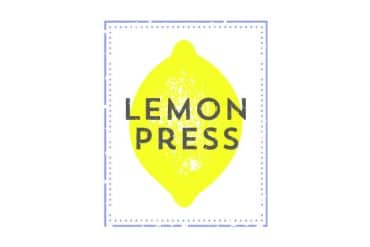Have you ever suffered through watching someone swirl a glass of wine, take a big sniff, a sip, and then start extolling a string of adjectives — anything from raspberry, rosehips, and hibiscus to wet rocks, rubber tire, barnyard, leather, or cat pee — and wonder if they’re just full of it?
Wine can seem overwhelmingly esoteric (and yes, sometimes pretentious) if you’re not an insider, but it doesn’t have to be. After all, the best thing about wine is drinking it! The pleasure can be taken to new levels, however, when you begin to understand more about what you’re drinking, and eventually learn how to identify those elusive flavor characteristics that sommeliers and other wine pros sniff out so easily from every glass. A simple crash course of the basics can transform your wine drinking experience and help you learn the difference between a bottle of Two-Buck-Chuck and something that’s really worth savoring. A fun and effective way to gain more knowledge about wine — at any level — is to host your own wine tastings. Here to help are some of Nantucket’s top sommeliers.
ORGANIZING A WINE TASTING: Limit the group to six people. This will help keep your wine tasting manageable and still functional if someone can’t make it. Plus, it’ll yield good samples from each bottle.
CHOOSE A THEME. You can go with any combination of wines from different countries, regions, varietals, or vintages. Jenny Benzie, founder of PourSipSavor.com and wine director at Nantucket’s newest restaurant, Cru, recommends choosing three wines from classic regions and three classic grapes. “I am a firm believer in starting with the basics and building your foundation from there,” says Benzie. Hieu Tran, the sommelier at the Wauwinet’s Topper’s, likes to start beginners off with grape varietal tastings that compare Old World Wines with New World Wines, such as pinot noirs from France, Italy, the U.S., and New Zealand.
The Tasting
Tasting wine is a sensory experience that involves your eyes, nose, and mouth. And though it may seem like sacrilege, it also requires spitting the wine out. Pour a small sample into the glasses and begin examining the different elements of each wine.
COLOR & CLARITY: If it’s a white wine, the color might be pale yellow, straw, or golden. If it’s a red wine, it may range from purple or ruby to garnet. Note whether you can see through the wine, if it’s clear or cloudy, or if there’s any sediment floating in it.
NOSE: Give the wine a thorough swirl to help get some air into it, and then smell it. If it’s a white, can you pick out lemon, apple, peach, vanilla, or coconut? If it’s a red, do you smell berries, cherries, stewed plums, pepper, chocolate, or baking spices? “I can spend gobs of time just smelling a great wine and enjoying the changes in the bouquet as it opens up,” says Ieva Aldins of American Seasons. “Wines can smell like they are going to be sweet or dry, and surprise you with something entirely different on the palate.”
TASTE: Swirl the wine again, and then take a big sip. Swish the wine around your mouth, hold it for a moment, and spit it out. Concentrate on the flavors. They may be surprisingly different from what you smelled. Benzie suggests focusing on everyday scents you’re used to: “Think about lemon-based dish soap, gasoline, the brininess of oysters, fresh-cut grass, barbecue, woods, fruits and vegetables at the market, and fresh floral scents.”
ADDITIONAL ELEMENTS TO CONSIDER:
It may take some practice before you get a grip on alcohol, body, tannin, acidity, and finish for your tasting notes. “But stick with it,” Tran says. “The more you taste, the more you’ll know.” The level of alcohol can be detected by a burning sensation in the back of your throat. The body can range from light to medium to full. The amount of dryness or wetness (from salivation) in your mouth clues you in to the levels of tannin and acidity. And the length refers to how long the taste lingers in your mouth.
Putting Your Tasting to the Test
There are many fun games that can be played to strengthen your tasting prowess. As you and your group’s confidence increases, compete against one another to see who possesses the most powerful palate. Fortunately, in the game of wine tasting no one ever truly loses.
THE TASTER TURNAROUND: While half the group looks away, the other half selects a different wine for each glass. The blind tasters then have to deduce which wine they are sampling by musing aloud on sight, smell and taste.
BROWN BAGGING IT: Each group member brings a wine to the tasting with the bottle concealed in a brown bag. After tasting each, the best-bagged bottle is selected by a vote and then the group works together to determine its varietal, appellation, perhaps even its vintage!
WHERE IN THE WORLD IS CHATEAU MONTELENA? Less about tasting and more about trivia and geography, this exercise challenges the group to explore famous wineries, wine trivia and wine regions around the world. It can also be used as a springboard to discuss the effects of climate, location, terroir, soil, and many other factors that make up a wine country. For instance, what factors make both Burgundy and Oregon conducive to growing pinot noir? How do they differ and why? Which wine-centric film caused the sales of merlot to plummet in 2004 just because a character refused to drink it? The answers are yours to find!
Honing your taste for wine has a lot to do with exposure, and tasting in a group can really help open the floodgates to what’s out there. Simply gather some friendly imbibers who are equally curious to learn, and get ready to host a highly sophisticated drinking game.




